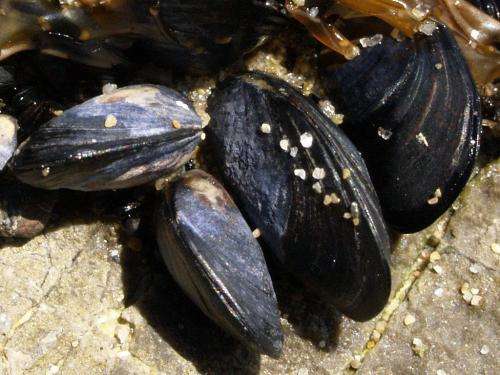Interstate mussel populations could mingle well with locals

Western Australian mussel populations (Mytilus galloprovincialis) could potentially mix with translocated species from the eastern states according to a study by the WA Department of Fisheries and UWA.
The research explores the feasibility and potential impact on the interstate translocation of mussel spat (young mussels) for aquaculture enhancement in WA, by assessing the genetic composition of WA blue mussel populations.
"The stimulus for the study stemmed from the WA mussel aquaculture industry having limited collection sites of natural spat fall and low productivity under the influence of the Leeuwin current," WA Fisheries expert and lead author Joana Dias says.
However, concerns were raised by the state's translocation authority (WA Fisheries) regarding the potential negative genetic impacts that the translocation and growth of mussels from interstate hatcheries could have on WA's local Mytilus population.
"We knew that the eastern states populations of blue mussels are a mix of native southern hemisphere M. Galloprovincialis and introduced northern hemisphere M. Galloprovincialis," Dr Dias says.
"However, we only had limited prior assessments on WA populations for comparison."
Samples of local mussel populations from Garden Island, Bunbury, Albany and Esperance were genetically analysed, along with samples from three hatcheries in South Australia, Victoria and Tasmania.
Local species have northern influence
Genetic analysis of the mussels showed a mixture of native and introduced haplotypes—with the great majority of introduced haplotypes occurring in WA populations.
The research found WA populations consisted of very high numbers of the introduced northern hemisphere type M. Galloprovincialis.
The results suggested that an application to move native mussels from the east to an area like WA, where populations are mainly introduced, could not be prevented based on genetic grounds.
"Despite concerns it would be difficult to make a case to prevent the proposed translocation from east to west on genetic grounds," Dr Dias says.
However, there would be serious concerns from translocating mussels from west to east due to WA's high northern hemisphere population.
Technology improves species identification
The scientists conducted the genetic analysis of the mussels at WA Fisheries' molecular biology laboratories at Hillarys.
"We now have the technology to provide species identification faster and cheaper," Dr Dias says.
The study presented valuable background information regarding the genetic composition of Mytilus populations that will prove useful in future biodiversity and biosecurity assessments of introduced and native blue mussel species in Australia.
"It is important to create awareness regarding these very similar species and raise the importance of connecting industry, policy and science," Dr Dias says.
More information: Dias, P. Joana, Fotedar, Seema, and Snow, Michael (2014). "Characterisation of mussel (Mytilus sp.) populations in Western Australia and evaluation of potential genetic impacts of mussel spat translocation from interstate." Marine and Freshwater Research 65, 486–496. dx.doi.org/10.1071/MF13179
Provided by Science Network WA





















